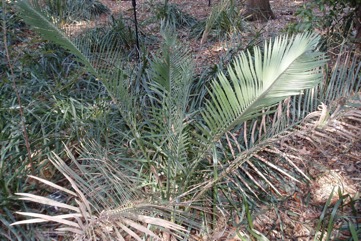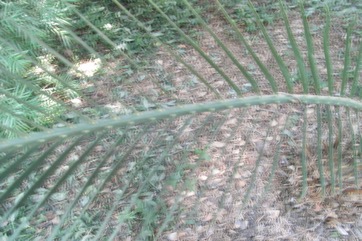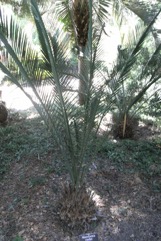Zamia, Zamia palm, Jeeriji

It grows in all types of soils. It grows naturally in Western Australia. They are in temperate climates with hot dry summers and cool to cold winters. It can grow in full sun or light shade. It requires good drainage. It tolerates moderate frosts. It suits hardiness zones 9-11.
Synonyms
- Macrozamia fraseri Miq.
- Macrozamia preissii Lehm
- Macrozamia oldfieldii (Miq.)A.DC.
- Cycas
Edible Portion
- Fruit
Where does Zamia grow?
Found in: Australia
Notes: There are about 25 Macrozamia species. It is endemic to Australia.
Growing Zamia, Zamia palm, Jeeriji
Cultivation: Plants are grown from seed.
Edible Uses: CAUTION: The fruit are toxic and cause cancer unless well processed. Fruit are buried for some time, then soaked in water. The case around the nut was then roasted before being eaten. The seeds are very starchy and can be crushed and steeped in water and the starch collected. It was then dried.
Production: The deep red seeds are allowed to ripen and fall out of the husks. They were then gathered and buried in heaps 90-120 cm deep and left for 8-9 months. They were then eaten.
Nutrition Info
per 100g edible portion| Edible Part | Energy (kcal) | Protein (g) | Iron (mg) | Vitamin A (ug) | Vitamin c (mg) | Zinc (mg) | % Water |
|---|---|---|---|---|---|---|---|
| - | - | - | - | - | - |
Zamia, Zamia palm, Jeeriji Photos



References
Bindon, P., 1996, Useful Bush Plants. Western Australian Museum. p 173
Bodkin, F., 1991, Encyclopedia Botanica. Cornstalk publishing, p 665
Cundall, P., (ed.), 2004, Gardening Australia: flora: the gardener's bible. ABC Books. p 850
Daw, B., Walley, T. & Keighery, G., 2001, Bush Tucker. Plants of the South-West. Department of Conservation and Land Management. Western Australia. p 60
Elliot, W.R., & Jones, D.L., 1993, Encyclopedia of Australian Plants suitable for cultivation. Vol 6. Lothian. p 278 (Photo)
Enum. pl. Austral. occid. 3. 1930
Etherington, K., & Imwold, D., (Eds), 2001, Botanica's Trees & Shrubs. The illustrated A-Z of over 8500 trees and shrubs. Random House, Australia. p 453
Greig, D., 1996, Flowering Natives for Home Gardens. Angus & Robertson. p 255
Hibbert, M., 2002, The Aussie Plant Finder 2002, Florilegium. p 189
Jones, D.L., 2000, Cycads of the world. Reed New Holland. p 256
Lazarides, M. & Hince, B., 1993, Handbook of Economic Plants of Australia, CSIRO. p 155
Lord, E.E., & Willis, J.H., 1999, Shrubs and Trees for Australian gardens. Lothian. p 97
Low, T., 1991, Wild Food Plants of Australia. Australian Nature FieldGuide, Angus & Robertson. p 138
Low, T., 1992, Bush Tucker. Australia’s Wild Food Harvest. Angus & Robertson. p 84
Marinelli, J. (Ed), 2004, Plant. DK. p 376
Menninger, E.A., 1977, Edible Nuts of the World. Horticultural Books. Florida p 164
Morley, B.D., & Toelken, H.R., (Eds), 1983, Flowering Plants in Australia. Rigby. p 27, 28
Paczkowska, G. & Chapman, A.R., 2000, The Western Australian Flora. A Descriptive Calatogue. Western Australian Herbarium. p 27
Wickens, G.E., 1995, Edible Nuts. FAO Non-wood forest products. FAO, Rome. p 179